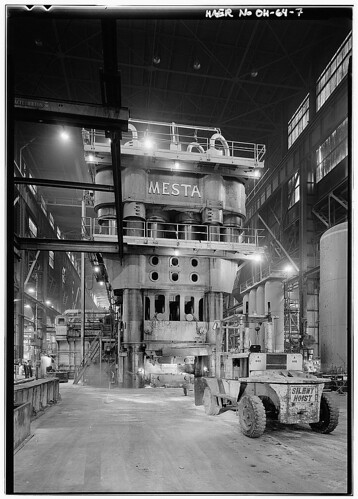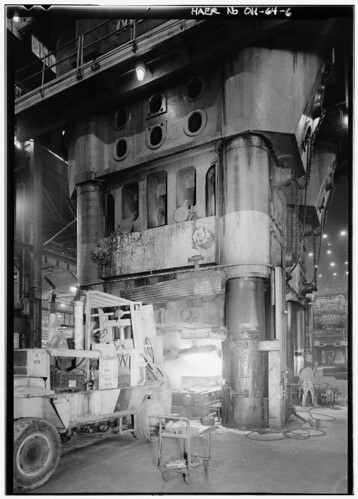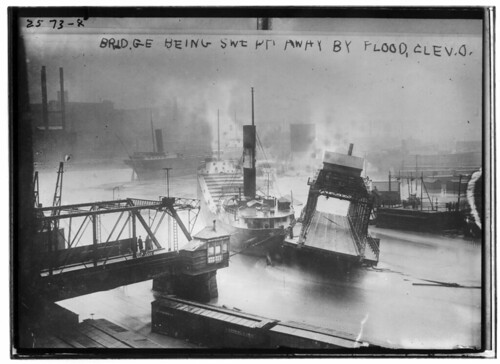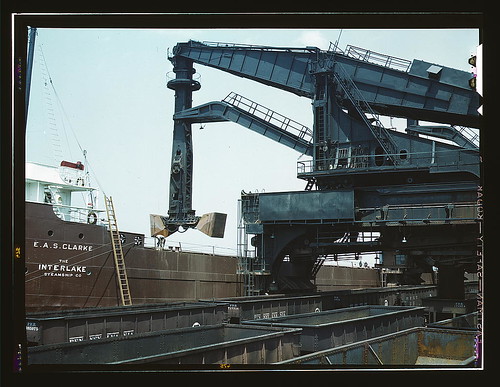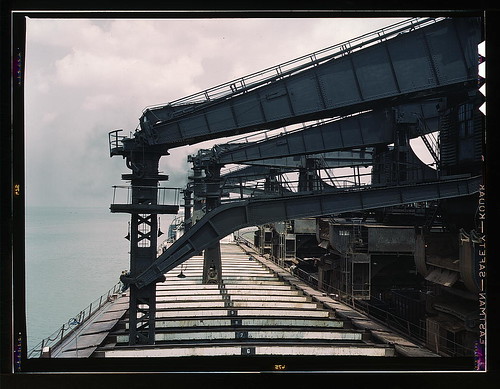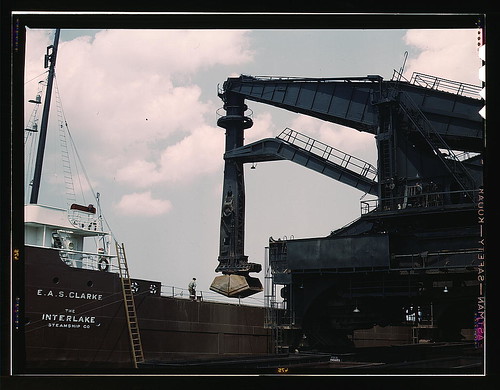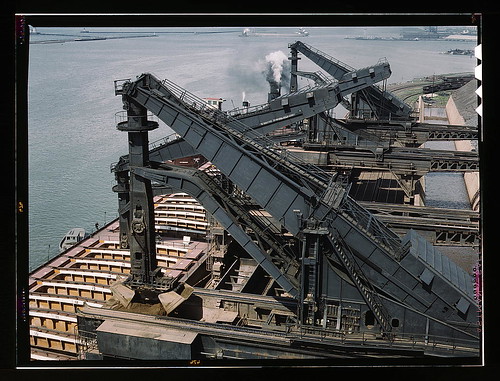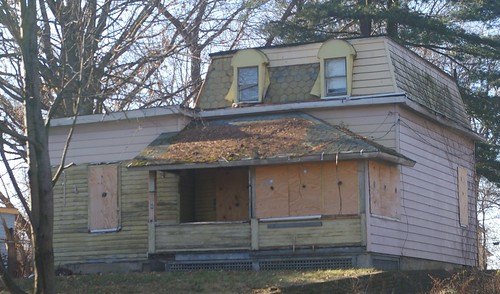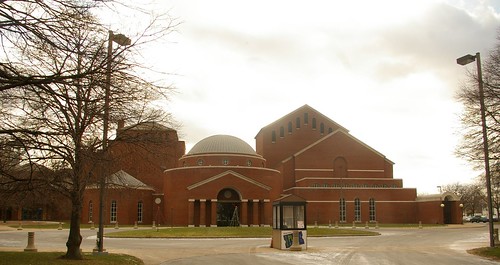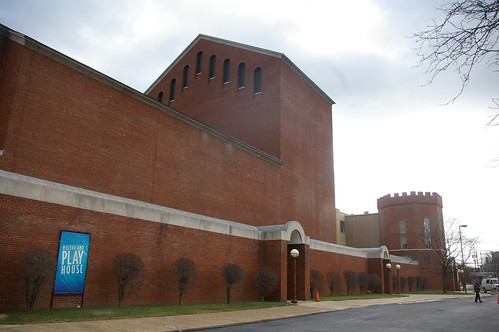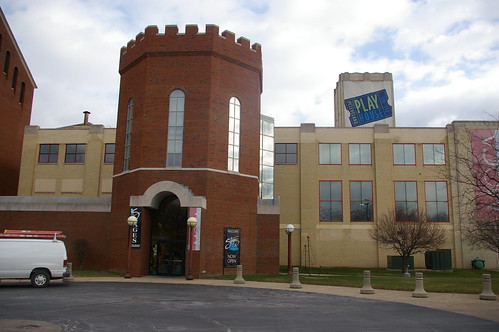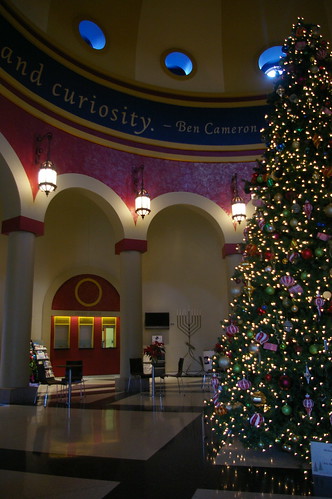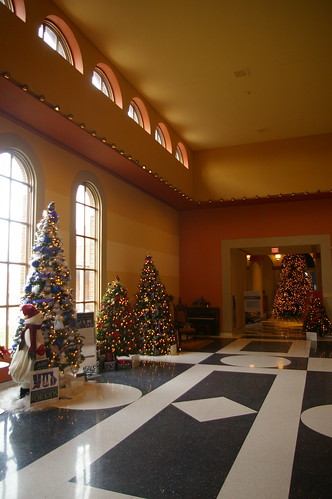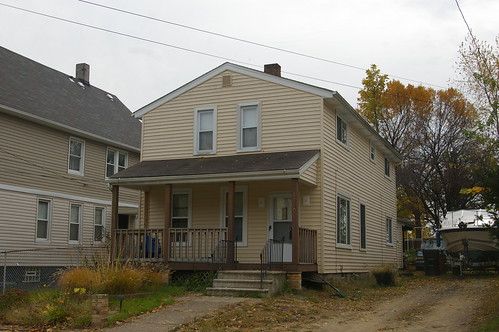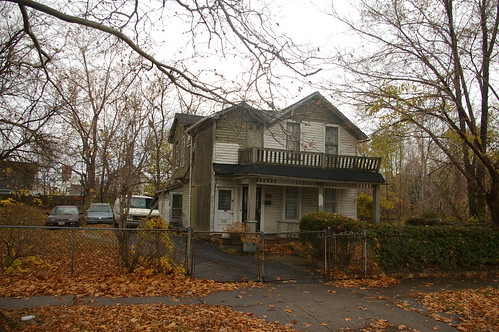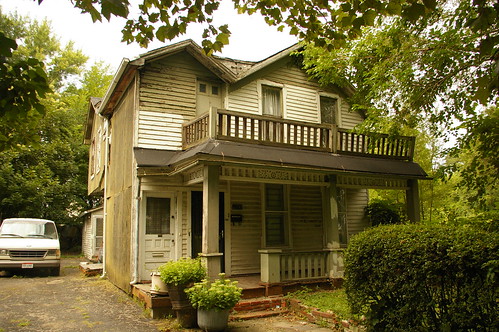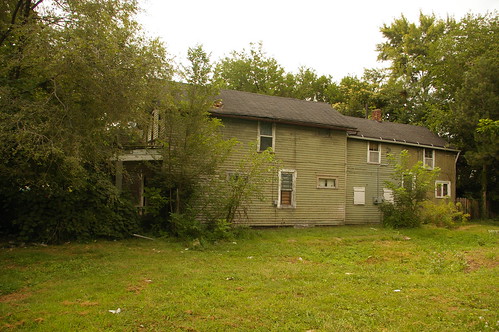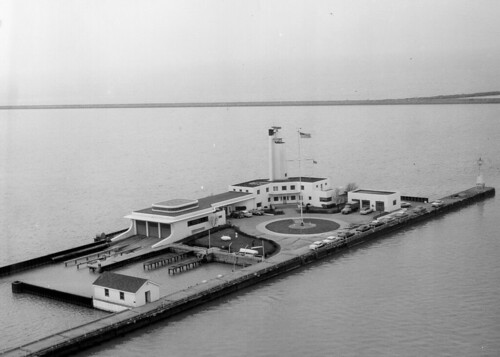
Completed in August, 1940, the Cleveland Coast Guard station, designed by architect J. Milton Dyer, was considered at the time the "most beautiful in the nation". Dyer, a Clevelander, is known for the Brown-Hoist Building, the Cleveland Athletic Club, Cleveland City Hall, First Methodist Church (E. 30 and Euclid), the Peerless Motor Car Company (later the Carling Brewery), the Tavern Club, and this building.
The complex, a significant piece of Cleveland architectural history, was built on fill just off the end of Whiskey Island, at a cost of $360,000 ($5.5 million in 2009 dollars). The main building contained quarters for officers, crew, and staff, a communications room, recreation room, mess hall, and storage. The boat house has slips for three vessels and space to work on them. A three car garage is also part of the complex.
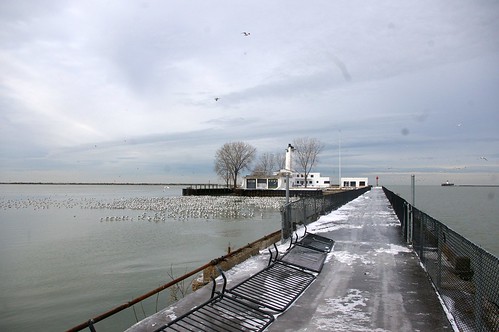
The Coast Guard Station is located on Whiskey Island, at the end of a long pier. Much of this part of Whiskey Island is now a public park. It's is an area of incredible beauty, surprisingly close to much of Cleveland. It took me about 15 minutes to drive to it from my University Circle area library.
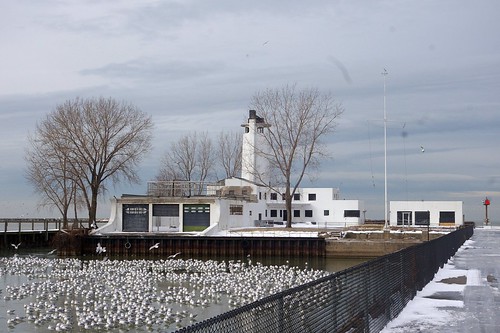
Even in the current condition, it is an attractive group of buildings.

The main building was boarded up recently. Before that time, Illicit Ohio captured an excellent set of photographs documenting the condition of the buildings. One visual element of note is the staircase to the second floor, which continues the "streamlined" elements present in the rest of the building.
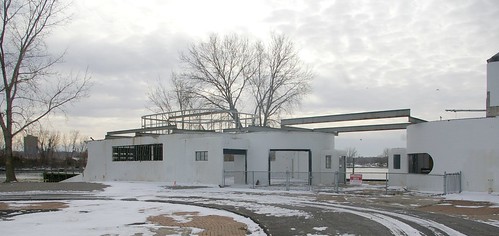
The roof between the boat house and main building, visible in the historic photograph above, was removed this fall. It is set to be replaced in the spring. I hope these plans also include the replacement of the roof on the main building, which, as seen in Illicit Ohio's photographs, is on the verge of collapse.
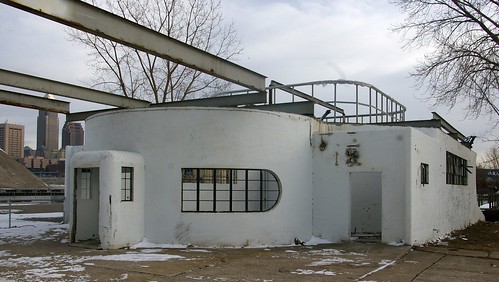
All of the buildings originally had steel casement windows like those seen here on the boat house, some square and some which curved with the wall. In the present condition, their repair would be difficult at best. The steel structural elements were likely installed when the roof was removed, to help stabilize the structure.

This garage-type door, probably made of galvanized steel, is original to the boat house. When it was built, there were five such doors. It appears that four remain. They made it possible to easily haul boats and materials in and out of the water.
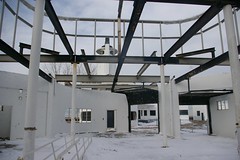
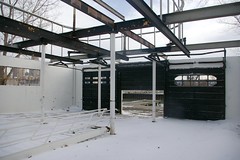
These two photographs show the interior of the boat house. The ladder, seen on the floor, originally provided access to the second floor space. It is unclear what that space was used for. The walls were lined with workbenches, some of which were removed as part of the recent clean-up effort. Again, the horizontal steel elements seem to be part of the recent stabilization effort. The round vertical posts are original.
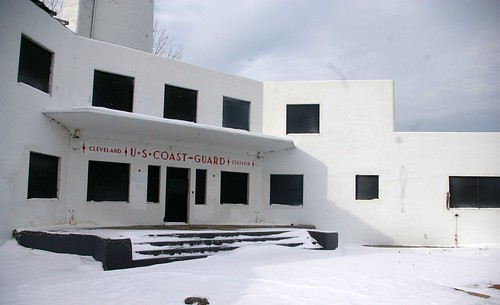
The visual presence of the main building is greatly improved by the recent repainting of the sign across the front.
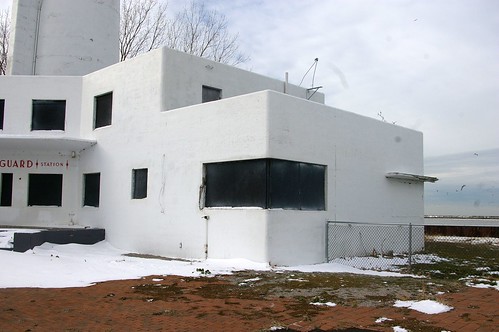
The windows on this corner of the main building would have illuminated the room as well as making the relationship between this structure and the garage a bit less harsh. The patio must have provided a lovely place to sit, observing the city and harbor. The concrete obviously needs some work, both around the windows and on the overhang to the right.
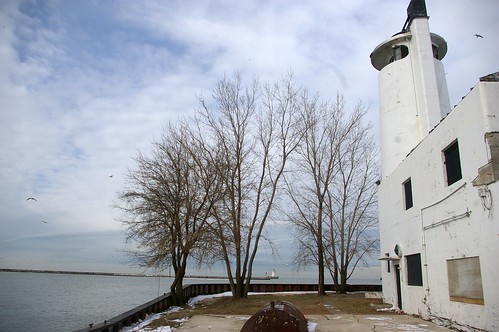
The location is beautiful, if a bit cold at this time of year. If the building is reopened, the observation tower would provide beautiful views.
There are many more photos of this complex over on my Flickr account.
The question comes up as to what we should do now. Restoring the buildings would likely cost $5 million plus - it seems unlikely that such funds will become available.
The structures need to be stabilized. All parts of the roof must be repaired to prevent further structural damage. Exposed steel must be painted to prevent further rust.
There isn't much need to protect the interior, as virtually all of the interior fabric is now gone. I'd like to see the building stabilized as a ruin. That is, in such a way as to preserve the visual character without the cost of a restoration. For instance, rebar could be fabricated to match the shapes of the old steel casement windows for those openings where the original windows have been lost.
These historic buildings are part of a beautiful park, in the heart of the city. It would be a waste to not take advantage of them.
It's a shame that these buildings were allowed to decay this far. We must act before buildings get to this point.
How do we achieve this? We need to stop just moaning amongst ourselves and take action. We need to tell our city council members that things like this are important to us and that it is absolutely imperative that they be saved. They need to understand that we'd rather have our tax dollars spent fixing up and preserving old buildings than on convention centers and stadia.
Money spent rehabbing buildings pays the salaries of local craftsmen and laborers - it stays local.
Further, we, individually, need to take action. As I've said before, we have to be the ones to save these old buildings. It's only our time and labor. Our commutes are a lot shorter than many areas - why not spend some of the time we would spend commuting on repairing an old house? Don't you want to live in a neighborhood full of beautiful, interesting, historic buildings?











